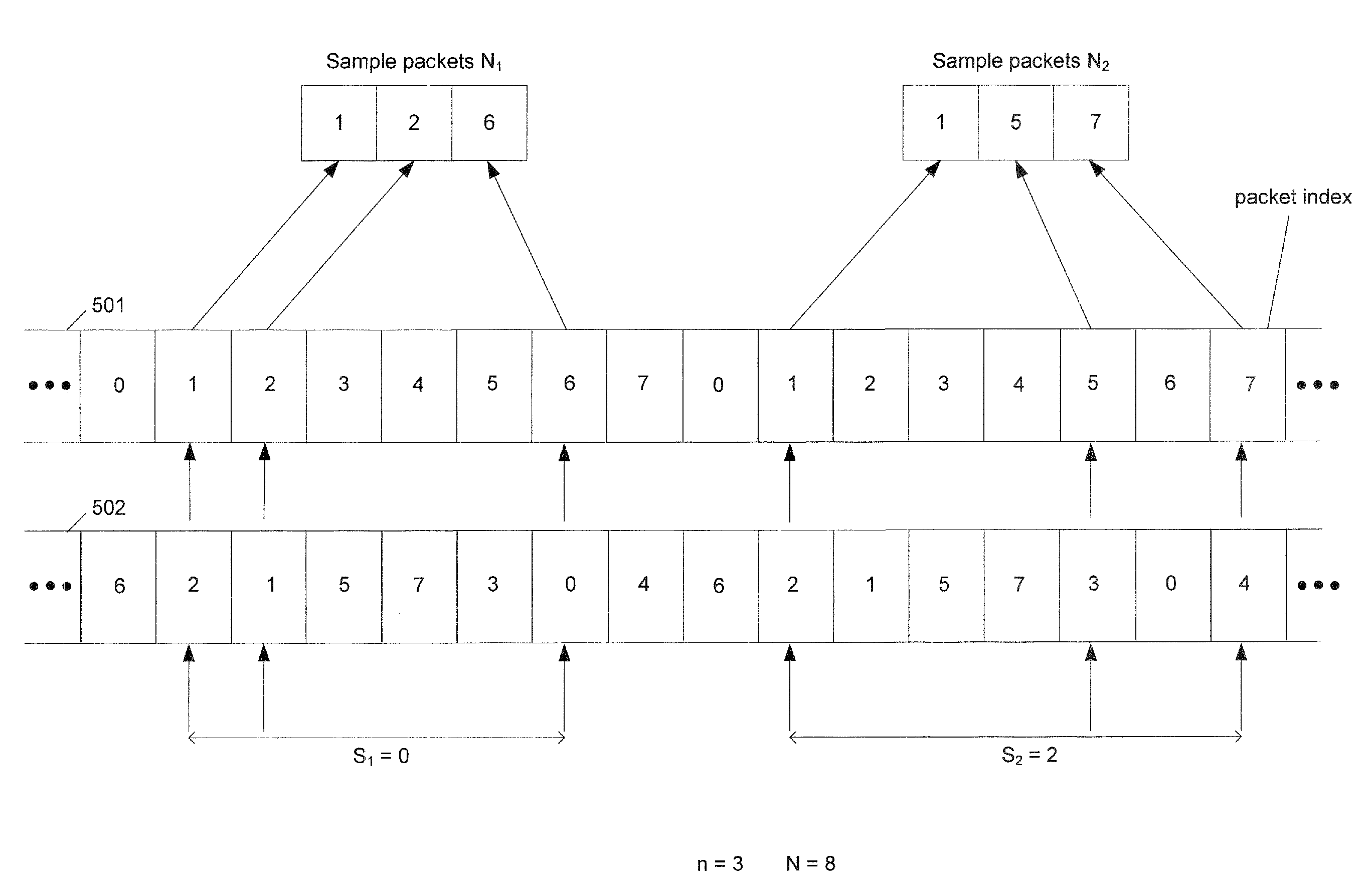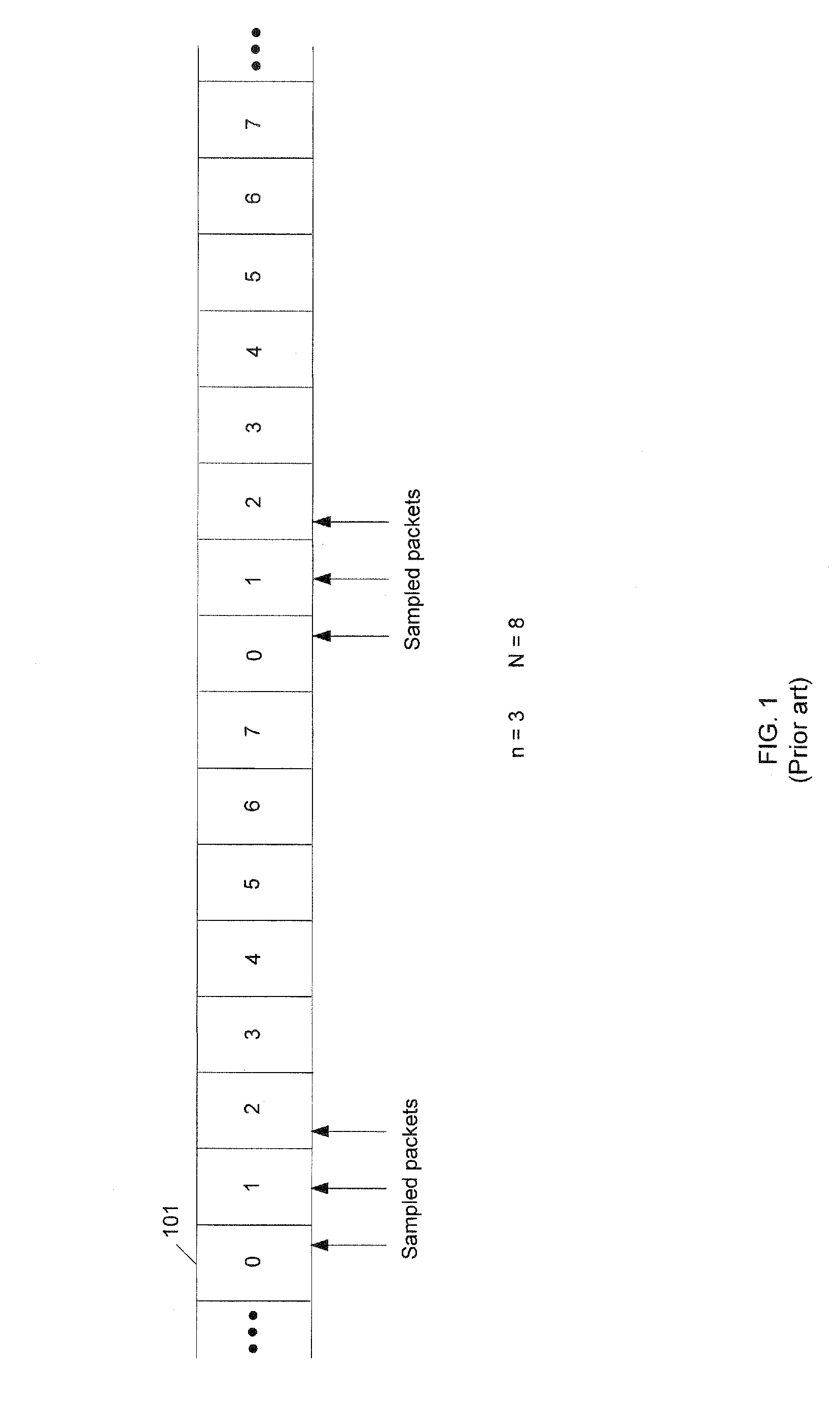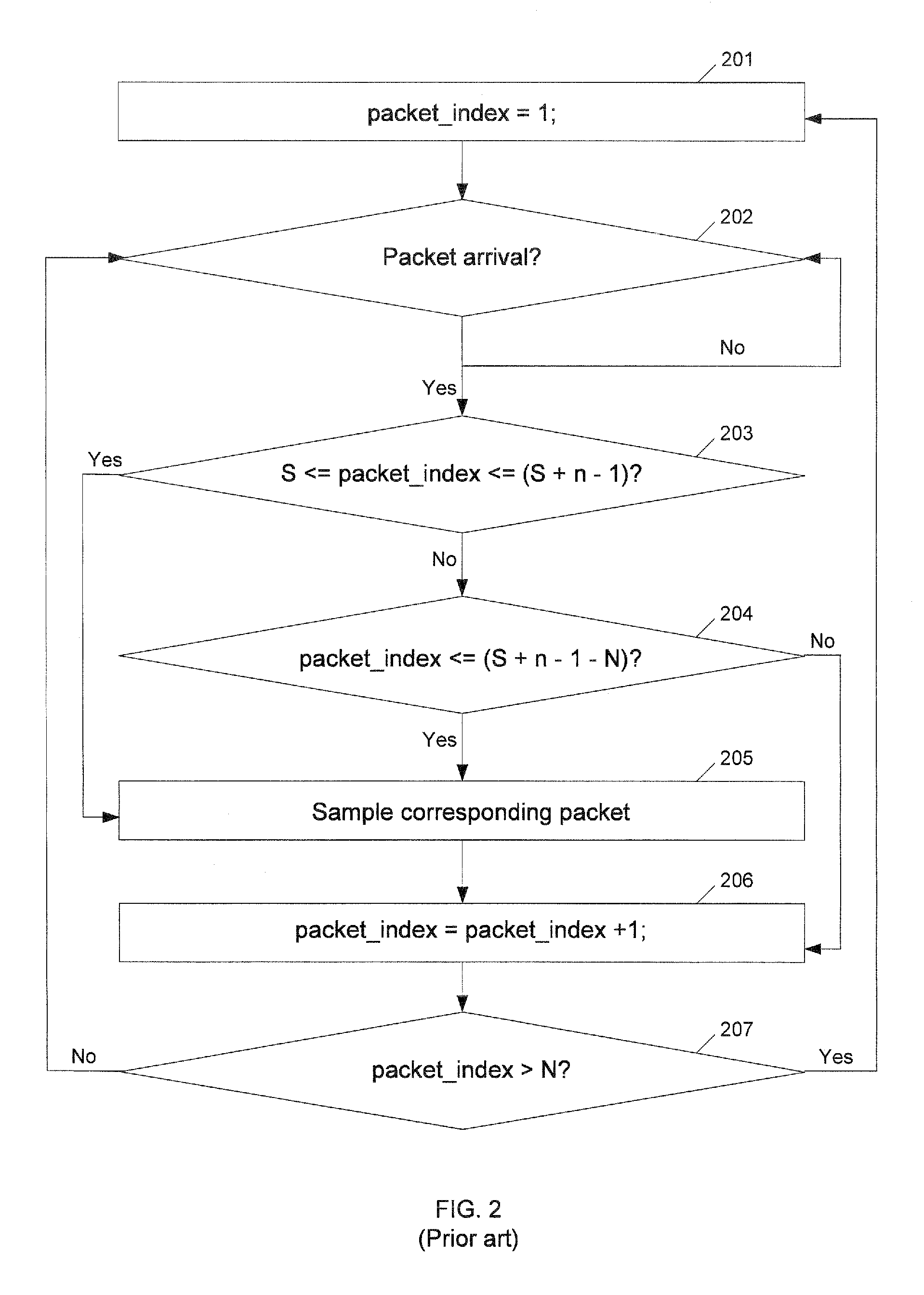Pseudo-random n-out-of-N packet sampling
a pseudo-random sampling and packet technology, applied in the field of pseudo-random sampling noutof n packets, can solve the problems of reducing threatening to overwhelm even the most sophisticated network management system, and consuming a lot of data, so as to reduce the probability of biasing. the effect of greatly minimizing
- Summary
- Abstract
- Description
- Claims
- Application Information
AI Technical Summary
Benefits of technology
Problems solved by technology
Method used
Image
Examples
Embodiment Construction
[0018]A pseudo random n-out-of-N sampling scheme is disclosed. As an aid to understanding the present invention, a prior art systematic n-out-of-N is depicted in FIG. 1. In a prior art systematic n-out-of-N sampling scheme, n number of consecutive packets are sampled from a sample size of N number of packets. By way of example, a stream of packets is shown as 101, and three packets are sampled from every eight packets. In other words, n=3 and N=8. Consequently, packet0, packet1, and packet2 . . . packet0, packet1, and packet2 . . . packet0, packet1, and packet2 . . . etc., are continuously sampled and then analyzed for purposes of network management.
[0019]FIG. 2 shows a flowchart depicting the process for a prior art systematic n-out-of-N sampling. A user first sets n, N and S values, where n packets are to be sampled out of every N packets. The variable S specifies the sampling points (i.e., sample (S)th packet to (S+n−1)th packet every N packets). If the number of packets between ...
PUM
 Login to View More
Login to View More Abstract
Description
Claims
Application Information
 Login to View More
Login to View More - R&D
- Intellectual Property
- Life Sciences
- Materials
- Tech Scout
- Unparalleled Data Quality
- Higher Quality Content
- 60% Fewer Hallucinations
Browse by: Latest US Patents, China's latest patents, Technical Efficacy Thesaurus, Application Domain, Technology Topic, Popular Technical Reports.
© 2025 PatSnap. All rights reserved.Legal|Privacy policy|Modern Slavery Act Transparency Statement|Sitemap|About US| Contact US: help@patsnap.com



